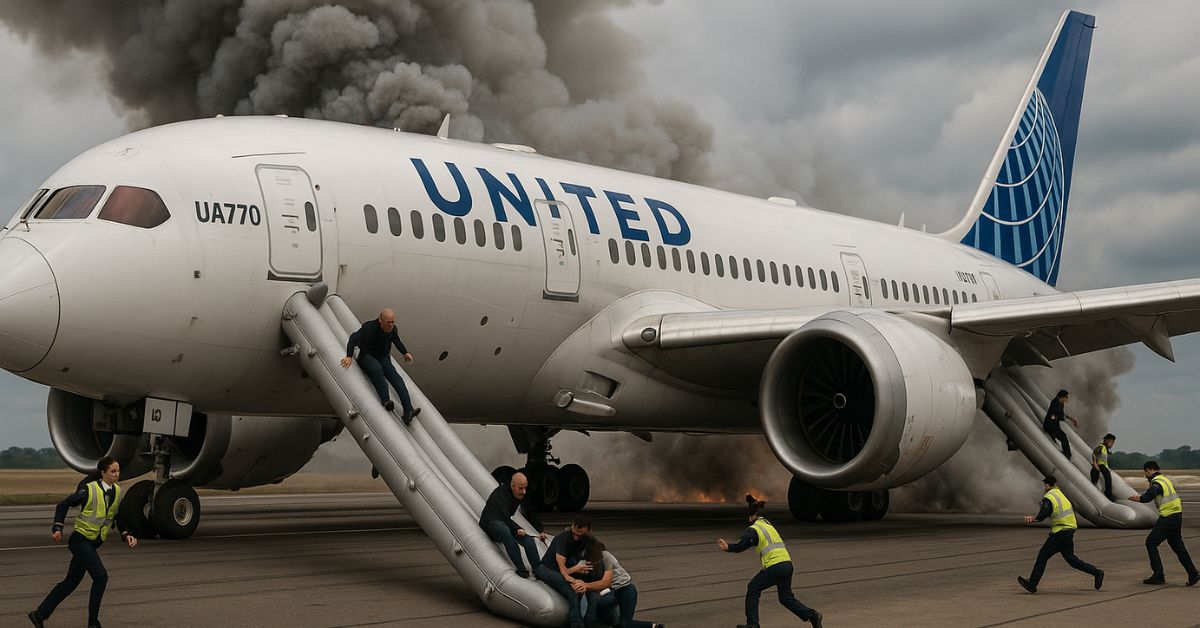Travel
United Airlines Flight UA770 Emergency Diversion: What Really Happened

United Airlines Flight UA770 recently experienced an unexpected emergency diversion that caught the attention of passengers and aviation observers alike. With rising travel in recent months and increased scrutiny on airline safety and operations, every incident becomes a moment of concern for travelers. In this article, we’ll break down what happened during the diversion of United Airlines Flight UA770, what it means for airline operations, and how airlines handle such emergencies to maintain safety and trust.
Understanding the Incident
Flight UA770 is a scheduled commercial flight operated by United Airlines, typically flying between key U.S. destinations. On the day of the incident, the aircraft took off as planned and was en route to its destination when something unexpected occurred mid-flight. As per routine aviation procedures, the pilots made a decision to divert the aircraft to a different airport due to an emergency.
An emergency diversion is never taken lightly. It is a standard response when any condition poses a potential risk to the safety of passengers, crew, or the aircraft itself. Diversions may occur due to medical emergencies, technical faults, weather challenges, or in rare cases, security concerns.
In the case of Flight UA770, reports indicate that the diversion was executed promptly and professionally. The aircraft landed safely at the nearest appropriate airport, and emergency services were placed on standby as per protocol. All passengers were safely deplaned and arrangements were made to continue their travel after the issue was resolved.
Why Do Emergency Diversions Happen
While flying remains the safest mode of transportation, there are still scenarios that require immediate action. The decision to divert a flight is often based on the judgment of the flight crew in coordination with air traffic control and airline operations. Some of the most common reasons for emergency diversions include:
- Medical emergencies involving passengers or crew members
- Technical or mechanical issues with aircraft systems
- Severe weather en route or at the destination
- Fuel concerns if flight plans change due to rerouting
- Security concerns or unruly passenger behavior
The diversion of United Airlines Flight UA770 highlights the importance of readiness and swift decision-making. Aviation crews undergo extensive training to handle these situations calmly and efficiently.
How Airlines Handle Emergency Diversions
When a flight is diverted, several steps are taken immediately to ensure safety and continuity of service. Here’s a simplified outline of how it works:
- In-Flight Assessment
The cockpit crew evaluates the situation in real time. They consult airline dispatch and make the call to divert if necessary. - Coordination With Air Traffic Control
The pilots inform air traffic control of their intention to divert. ATC then provides a revised flight path and prepares for the aircraft’s arrival at the new airport. - Passenger Communication
Cabin crew members keep passengers informed with calm and clear instructions. Maintaining trust and avoiding panic is critical. - Ground Response
Emergency response teams are alerted on the ground. Ambulance, fire services, and maintenance teams may be on standby depending on the nature of the emergency. - Post-Landing Arrangements
Passengers are provided with information and support. Alternate travel arrangements, meals, or hotel accommodations may be offered depending on the delay. - Aircraft Maintenance and Investigation
If the diversion was due to a mechanical issue, the aircraft is inspected and repaired before it can return to service. Reports are filed with aviation authorities as needed.
Impact on Passengers
While diversions can be inconvenient, they are ultimately about safety. Passengers aboard Flight UA770 experienced delays and schedule disruptions, but their safety was never compromised. Airlines like United have systems in place to minimize discomfort, including rerouting passengers on alternative flights and providing assistance at the airport.
For most travelers, such experiences also offer a renewed appreciation for the professionalism and training of flight crews. Knowing that the system works exactly as it should in an emergency can provide peace of mind on future journeys.
The Importance of Flight Safety
The aviation industry maintains strict safety standards. Events like the emergency diversion of Flight UA770 serve as reminders of how important preparedness is. Flight crews rehearse emergency scenarios regularly. Ground staff, dispatchers, and maintenance teams also work behind the scenes to make sure safety comes first.
Even though diversions are rare, they are handled with the utmost seriousness. It’s better to be cautious and land early than to risk flying with an unresolved issue. In aviation, proactive decisions save lives.
Looking Ahead
As passenger numbers continue to rise and travel becomes increasingly accessible, airlines are under greater pressure to deliver both safety and comfort. Incidents like the diversion of United Airlines Flight UA770 reinforce the importance of upholding standards and investing in training, communication, and infrastructure.
While the event may have been stressful for passengers at the time, the safe outcome is a testament to the systems in place. United Airlines, like most major carriers, operates under strict safety regulations and has shown its ability to handle emergencies with professionalism.
Frequently Asked Questions
What caused United Airlines Flight UA770 to divert?
The specific reason has not been publicly disclosed, but emergency diversions typically result from mechanical issues, medical situations, or weather disruptions. Safety was the priority, and the flight landed without incident.
Were any passengers hurt during the incident?
No injuries were reported. All passengers were safely deplaned after the emergency landing.
How does United handle passengers after a diverted flight?
United typically rebooks passengers on the next available flight, provides assistance at the airport, and offers meals or accommodations depending on the delay duration.
Is flying still safe after such incidents?
Absolutely. These incidents show how effective airline safety protocols are. Flights are safer today than ever before, and crews are trained to respond to emergencies professionally.
Should I be worried if my flight gets diverted?
No. Diversions are a precautionary measure. They ensure that any possible risk is addressed immediately. The goal is always to protect passengers and crew.


